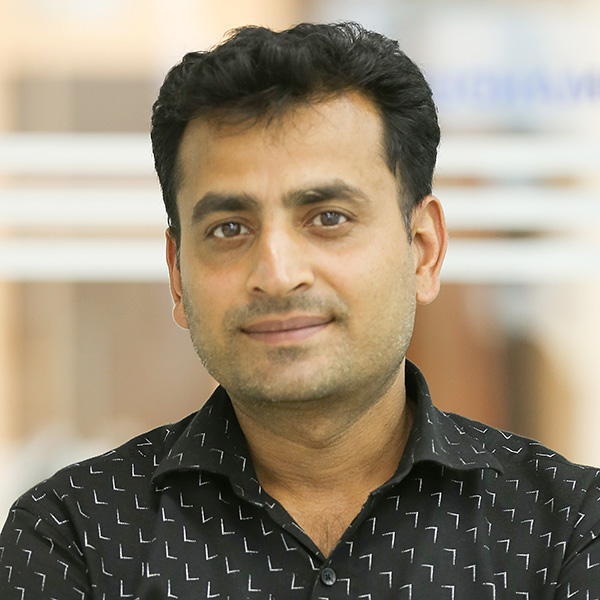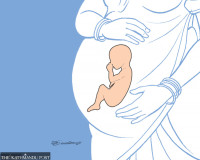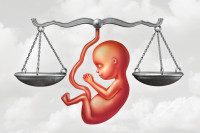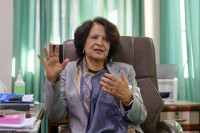Health
High Covid-19 vaccine acceptance among above 65 population encourages officials
More people are seeking to get the jabs in the second phase, surpassing authorities’ expectations, but arranging vaccines for the rest of the population is still a challenge.
Arjun Poudel
On Sunday, Bishnu Prasad Phuyal, a resident of Kageshwori-Manohara Municipality on the outskirts of Kathmandu, took Covid-19 vaccine at Allapot Health Post, near his home.
Phuyal, 65, said he did not face much hassle in the process.
“My turn came after waiting for a while,” Phuyal told the Post. “I am happy to get vaccinated against the disease that scared us the whole of last year.”
Phuyal is among citizens over 65 years of age for whom the government on Sunday launched the second phase of Covid-19 vaccination.
He said he is now holding consultations with doctors to get his 89-year-old mother, who has some preexisting conditions—high blood pressure, diabetes and thyroid—vaccinated.
“My wife is 64, so she could not get the vaccine this time,” said Phuyal, who hopes to get her vaccinated as soon as the next round of the campaign begins.
Like Phuyal, 65-year-old Philemon Khadka Chhetri from Sukedhara, Kathmandu
is planning to take the vaccine at a vaccination centre near his house.
“I have a meeting to attend on Thursday of our local organisation of which I am the executive director,” he said. “If I cannot make it on Thursday, I will get it on Friday.”
Those involved in the ongoing vaccination drive say there has been an overwhelming response in the second phase compared to the first.
“Participation of the people in the second phase of the campaign is encouraging… it’s more than we had expected,’ Dr Jhalak Sharma, chief of the Child Health Section at the Family Welfare Division under the Department of Health Services, told the Post. “If the immunisation programme goes at the existing pace, we will be able to conclude this first round of the second phase within next five days.”
Nepal launched its vaccination drive on January 27, becoming one of the first countries in the world to start inoculating its citizens.
In the first phase, frontline personnel—health workers, ambulance drivers, sanitation workers, female community health volunteers, security personnel deployed for managing the bodies of people who die due to complications related to coronavirus infection as well as prisoners, people residing in old age homes and journalists were vaccinated.
Of the 430,000 people estimated to be vaccinated in the first phase, only
184,857 took the jabs. Authorities then announced that journalists, staff of diplomatic missions and financial institutions, officials at local and provincial governments and elected representatives of provincial and local governments could take the jabs.
The initial target could not be met for a number of factors like vaccine hesitancy among health care workers, lack of access to the immunisation centres, failure of the authorities to take targeted population into confidence, and apathy for launching awareness campaigns and wrong estimation.
Officials say there, however, has been a high acceptance of Covid-19 vaccine among the above 65 population. According to the Ministry of Health, at least 686,554 people were inoculated until Tuesday evening (in three days).
The number of people administered with the vaccine could be more, as some health facilities were yet to update data, according to ministry officials.
“There were some health workers who were hesitant to take the vaccine, but members of the public, especially the elderly, have not shown any kind of apprehension,” said Sharma. “Maybe because of Nepal’s good immunisation records, there has been a positive attitude towards vaccination campaigns among the public.”
For many Nepalis, the arrival of Covid-19 vaccines so early itself was a surprise. Just as countries around the world struggled to inoculate their populations, Nepal managed to launch its vaccination drive exactly a year after the country reported its first Covid-19 case. But the early arrival of the vaccine also raised doubt, with some suspecting if the vaccine could have long-term side effects.
Officials say suspicions about the vaccine could have been the reason for the first phase of vaccination not being as satisfactory as expected, as vaccine hesitancy is not an issue in Nepal.
After receiving 1 million doses of vaccine from India under grant assistance on January 23, with which the country launched its vaccination drive, the government on February 16 approved the advance payment to procure two million doses from the Serum Institute of India.
The Indian company’s Covishield vaccine was supplied to Nepal by India.
Half the total order was delivered on February 21.
Nepal received another 348,000 doses of vaccine, provided under the COVAX facility on March 7.
The government has also requested the Serum Institute of India to sell an additional five million doses to Nepal. However, due to worldwide shortages, no deal has been reached so far with the manufacturing company.
Officials at the Health Ministry said that the manufacturing company, which sold the vaccine at $4 per dose earlier, is reluctant to sell more doses for the same price.
“We have reached a deal to purchase each dose at $5.5, but
disagreement remains on paying an additional 10 percent, which we have to bear,” Dr Roshan Pokhrel, chief specialist at the Health Ministry, told the Post. “We are requesting the company to sell the product directly to the Nepal government.”
While officials are upbeat about an overwhelming response during the second phase, there are concerns if the country could face vaccine shortages.
Some districts have been forced to halt immunisation for the lack of sufficient doses of the vaccine.
Officials say the Health Ministry has already directed for reverse supply (supply in the places that lacked the vaccine from places which have more doses) so that the immunisation drive can run without glitches.
“The existing stock of the vaccine will be over in the next few days,” Dr Shyam Raj Upreti, coordinator of the Covid-19 Vaccine Advisory Committee, told the Post. “We don’t know how long it will take to bring the additional doses.”
Nepal needs to vaccinate 72 percent of its 30 million population against Covid-19. The remaining population is under 14 years in which age group coronavirus vaccines have not been trialled yet.
Vaccines provided under the COVAX facility would cover 20 percent of the population. So the government will need around 45 million doses.
Public health experts say the way the over-65 population is reaching vaccination centres to get the jabs is an encouraging sign and that authorities must make additional efforts to acquire enough vaccines so as to maintain the momentum.
Vaccine acceptance is not an issue; the problem is securing enough vaccines for the rest of the population, according to them.
“Vaccine acceptance rate has always been high in Nepal,” said Dr Baburam Marasini, former director at the Epidemiology and Disease Control Division.
According to Marasini, Nepali people have never questioned the quality of vaccine and even in 1816 acceptance rate of the smallpox vaccine was high.
“As we have already decided to immunise all people, officials should make extra efforts,” said Marasini, “to complete inoculating everyone at the earliest by acquiring the required number of doses.”




 5.05°C Kathmandu
5.05°C Kathmandu














